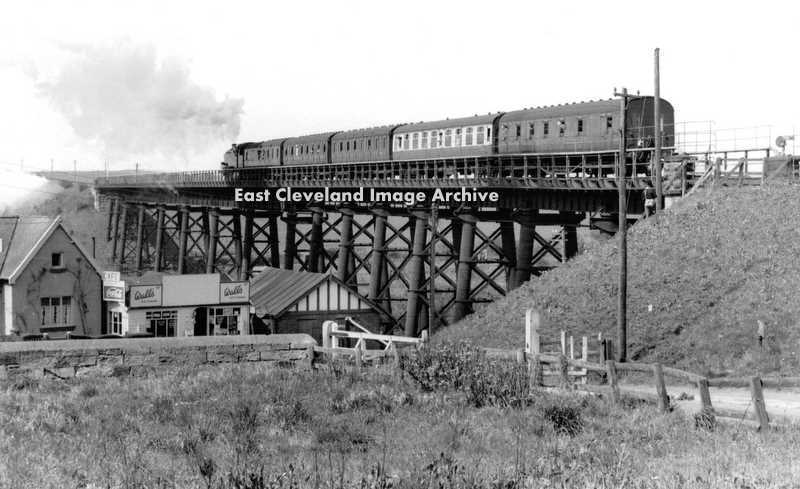
Staithes viaduct viewd from the area adjacent to the station in Staithes.
Image courtesy of Maurice Grayson.
|
|
||
 Staithes viaduct viewd from the area adjacent to the station in Staithes. Image courtesy of Maurice Grayson. 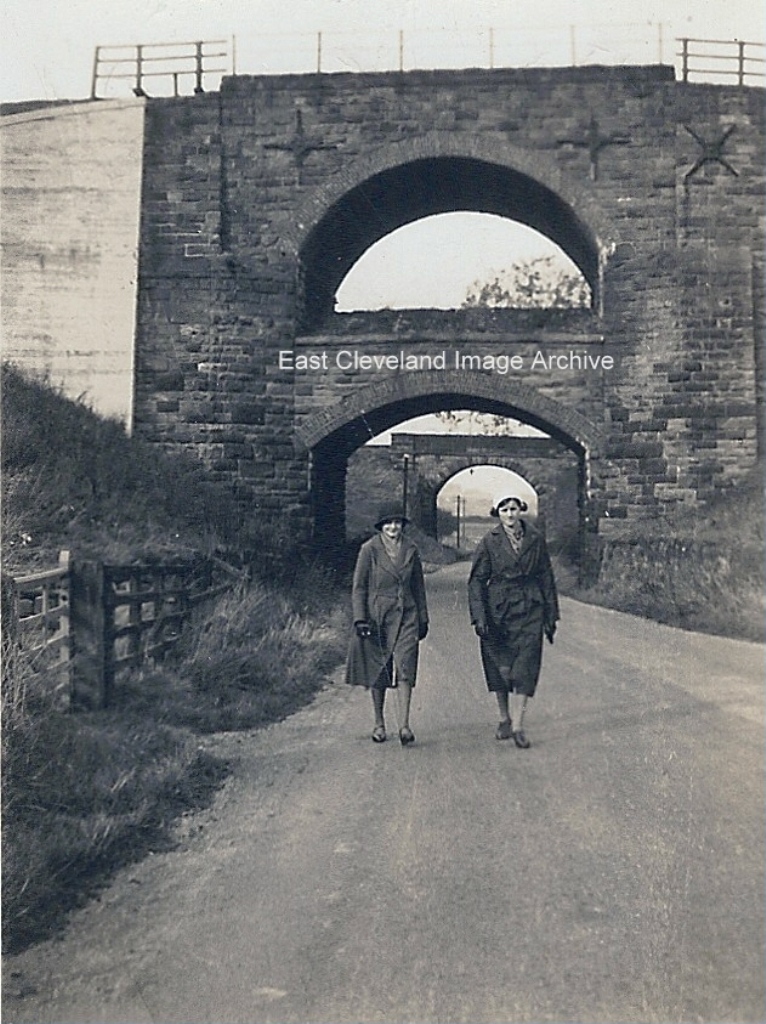 Claphow bridges in the 1940s, I would not advise walking along the road in this manner today. It is now known that the two ladies are: ”Two sisters (left to right); Joan and Emily Greensitt whose family owned a guest house on Marine Parade, Saltburn. The image was taken of them taking a leisurely stroll through the Claphow bridges about 1940” 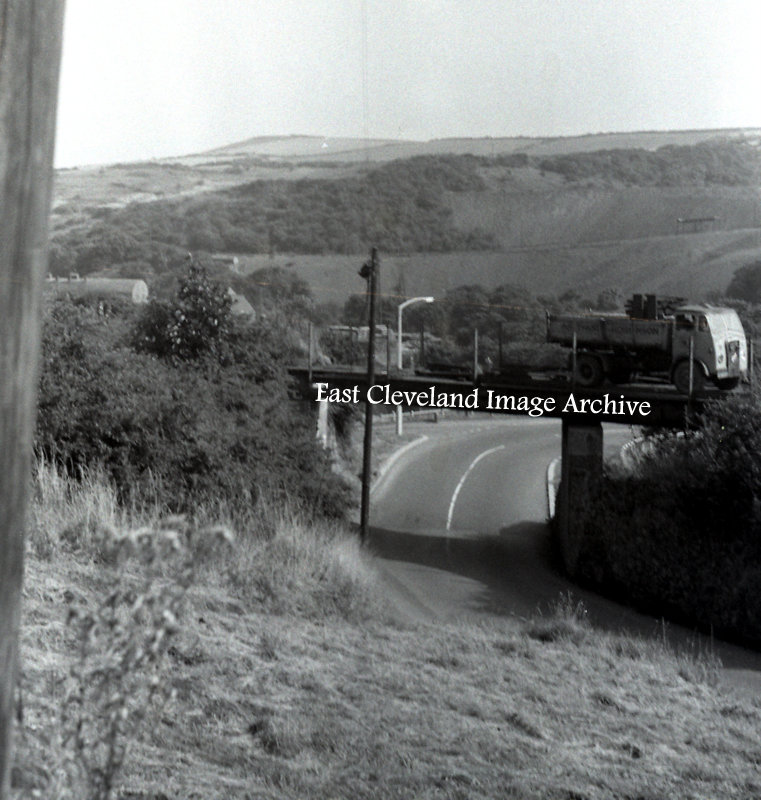 Removing the rails from the bridge down to Skinningrove on the Zig Zag railway, just below the hairpin bend on Carlin How bank. Work undertaken by Darlington District Engineers Department, prior to the bridges demolition, about 1958. Image courtesy of Ken Loughran. 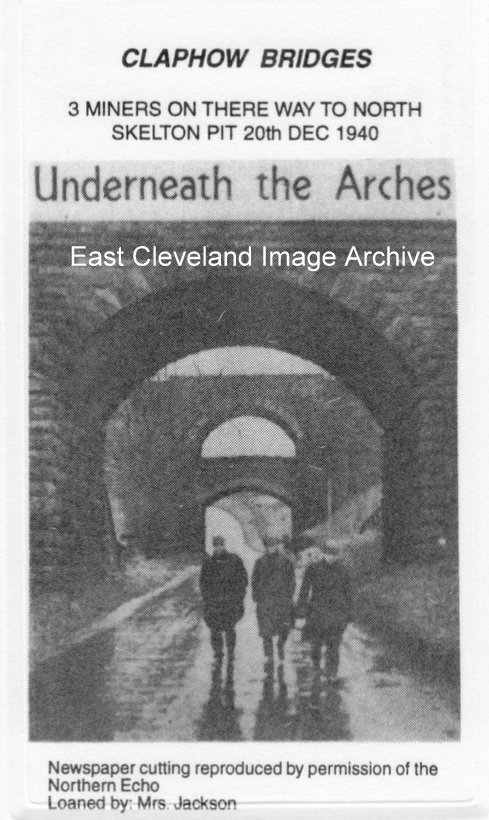 It must have been a wet walk that day, judging by the dress of the miners and the shining road. We asked ”More importantly can anybody identify the men?” and Paula Miller now tells us ”This is the Moody brothers of Lingdale”. Image courtesy of Jeff Templeman and many thanks to Paula Miller for that update. 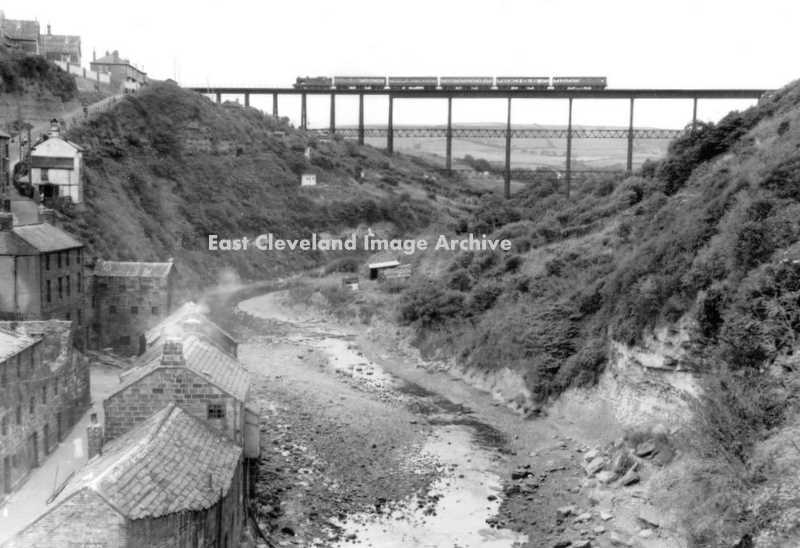 A view the viaduct from downstream, looking inland. The train is heading towards Staithes station. Chris Davies tells us:”The engine is a Raven/Gresley A8 4-6-2t hauling a train of ex-NER and a Thompson suburban brake of the LNER.” Francois Andre Greef advises: “I deduce from the way the river flows beneath the photographer that he was standing on the old trestle bridge at the Granary Yard, and not on the “Lower Bridge”, which rested on stone bulwarks. The old bridge was where the stepping stones are today.” Image courtesy Maurice Grayson, thanks to Chris Davies and Francois Andre Greef for the updates.
Staithes Viaduct with a local commuter train, powered by a British Railways “Standard” tank engine. This photograph was probably taken towards the end of the line’s existence, a two carriage train indicating the decline of rail traffic as increased fares and better road links caused migration away from the railways. Simon Chapman advised: “All that remains now are the concrete piers that supported the steelwork. In view is the stone abutment which supported the west end. The east end abutment; also of stone was demolished”. Image courtesy of Maurice Grayson and Jean Hall, thanks to Simon Chapman for the last piece of information.
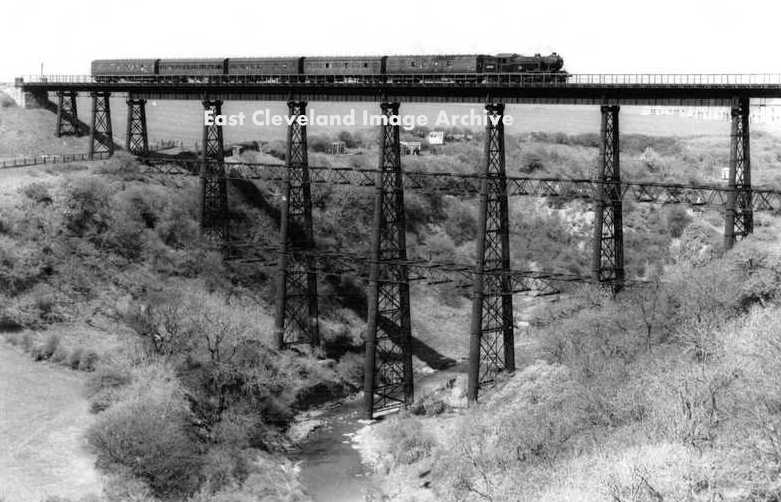 Train bound for Whitby, five coaches were normal in summer, reduced to two or three for winter service; believed to date from the mid 1950s. Mark Thompson ha sadvised: “A photograph of Staithes Viaduct, taken from the landward side, showing a 5 coach train travelling towards Whitby, headed by a large tank engine (possibly an A8 (4-6-2T) or maybe a BR Standard tank (2-6-4T) – or even a Thompson L1 tank (2-6-4T).” What a remarkably scenic railway this was – nowadays it would be the ideal candidate for preservation – and we cannot blame Dr Beeching for the closure of the line. As Andrew Hogan tells us: ”This line closed in 1958, Dr. Beeching did not come to power until 1962 and therefore had nothing to do with its closure.” Russ Pigott tells us: ”The loco is a class L1 2-6-4t and the photo was taken after 1956 as it has the later BR crest,maybe even closure day as there seems to be a lot of people (enthusiasts?) stood up and looking out of the coach windows.” Image courtesy Maurice Grayson, thanks to Mark Thompson, Andrew Hogan and Russ Pigott for the updates. 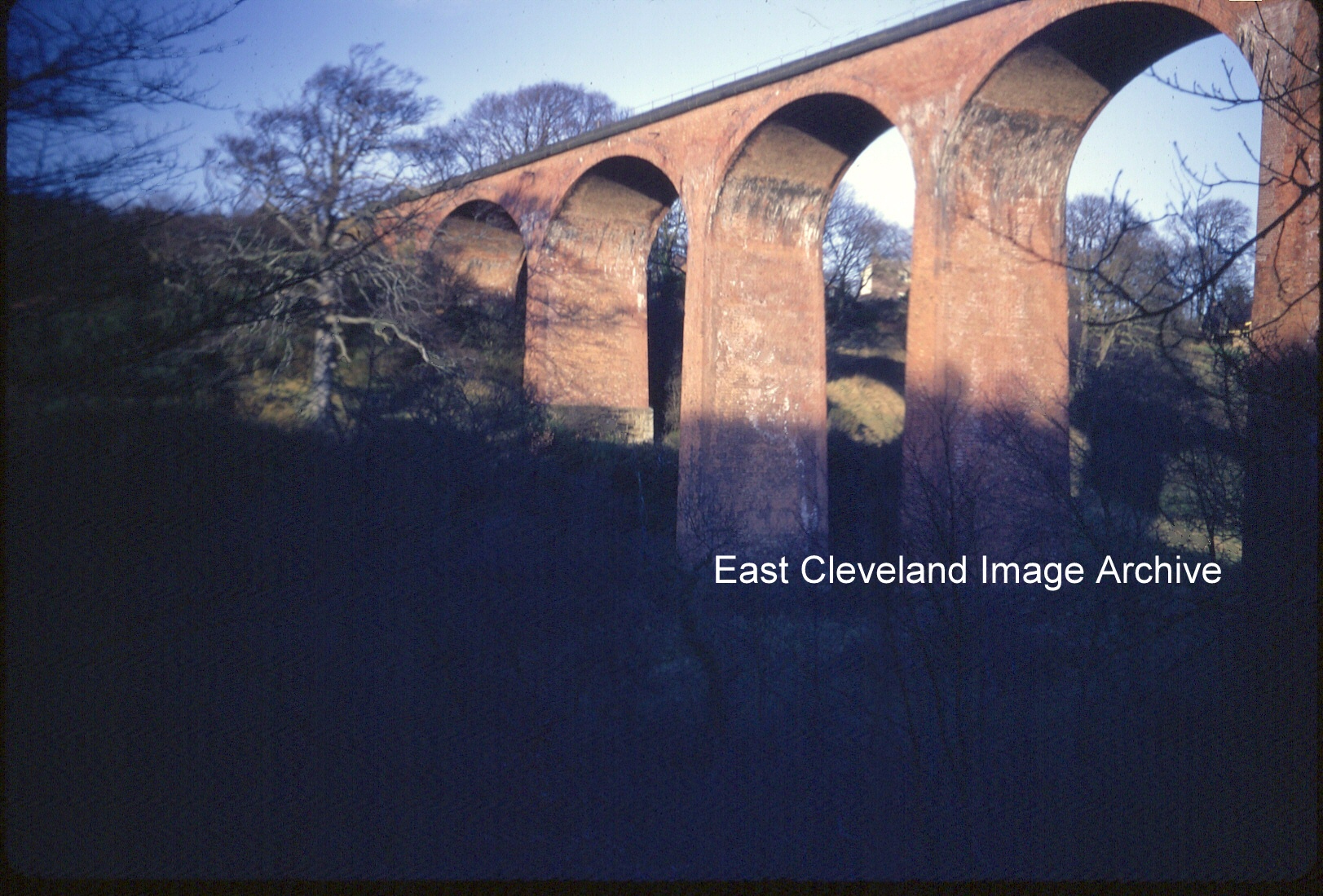 An image of the railway viaduct which spans the valley close to the site of Marske Mill, taken in February 1972. 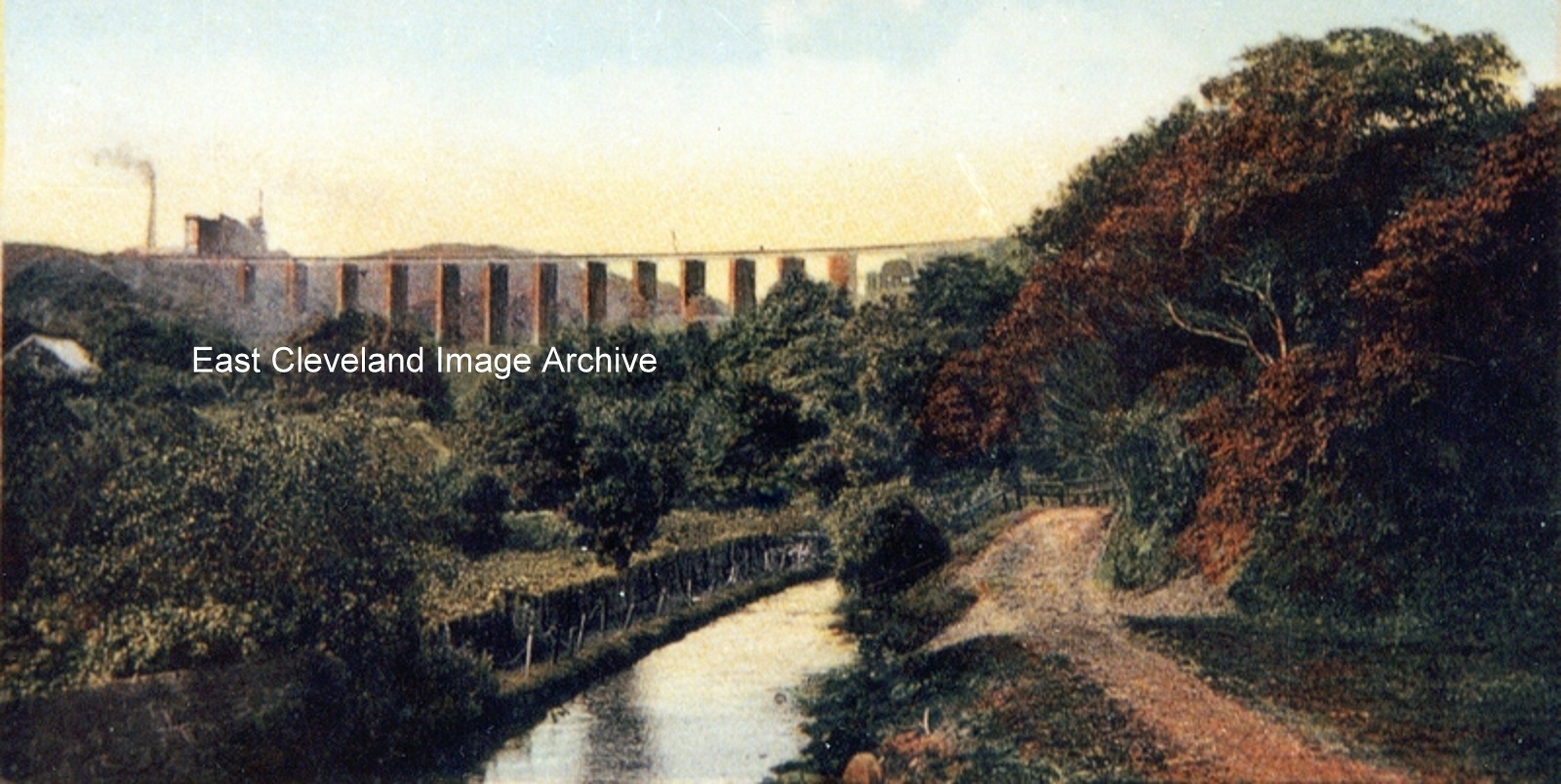 I had to look hard at this image (taken from a hand tinted postcard) as I thought it had been reversed I don’t remember a footpath at that side of the beck only Glover’s path on the left hand side. But I have been assured that there was a path on that side and of course you can see Liverton Mine in the background, telling it hasn’t been reversed. 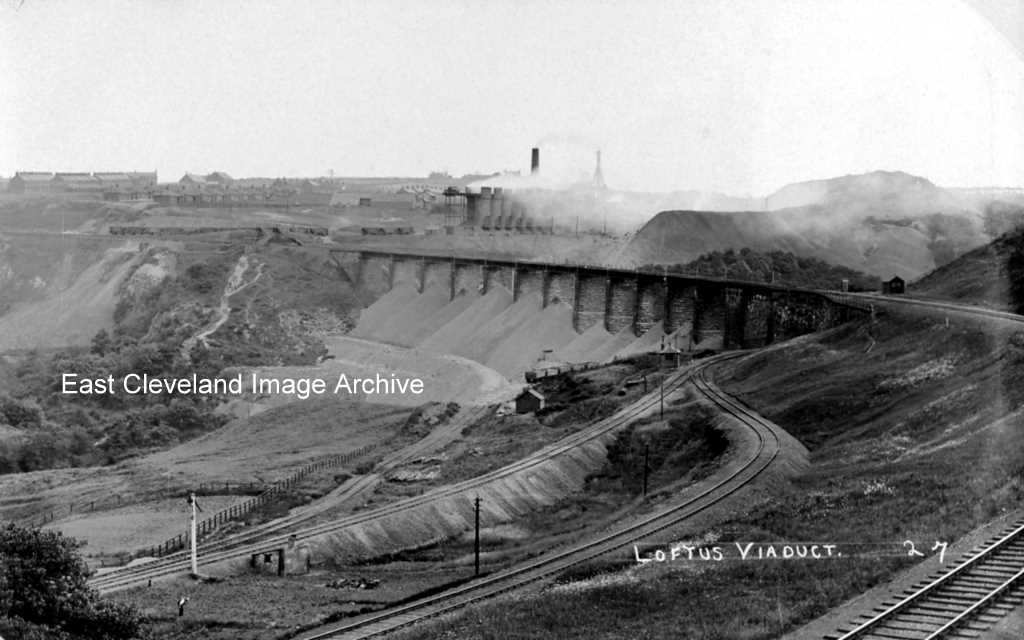 Named Loftus Viaduct on this postcard, but still the same one, not completely filled in yet. The note on the back is dated December 8th, 1911, this is another postcard in the Penny Real Photo Series from Wm. Richardson & Sons, Loftus. . Image courtesy of Keith Bennison and Beryl Morris. |
||
Recent Comments